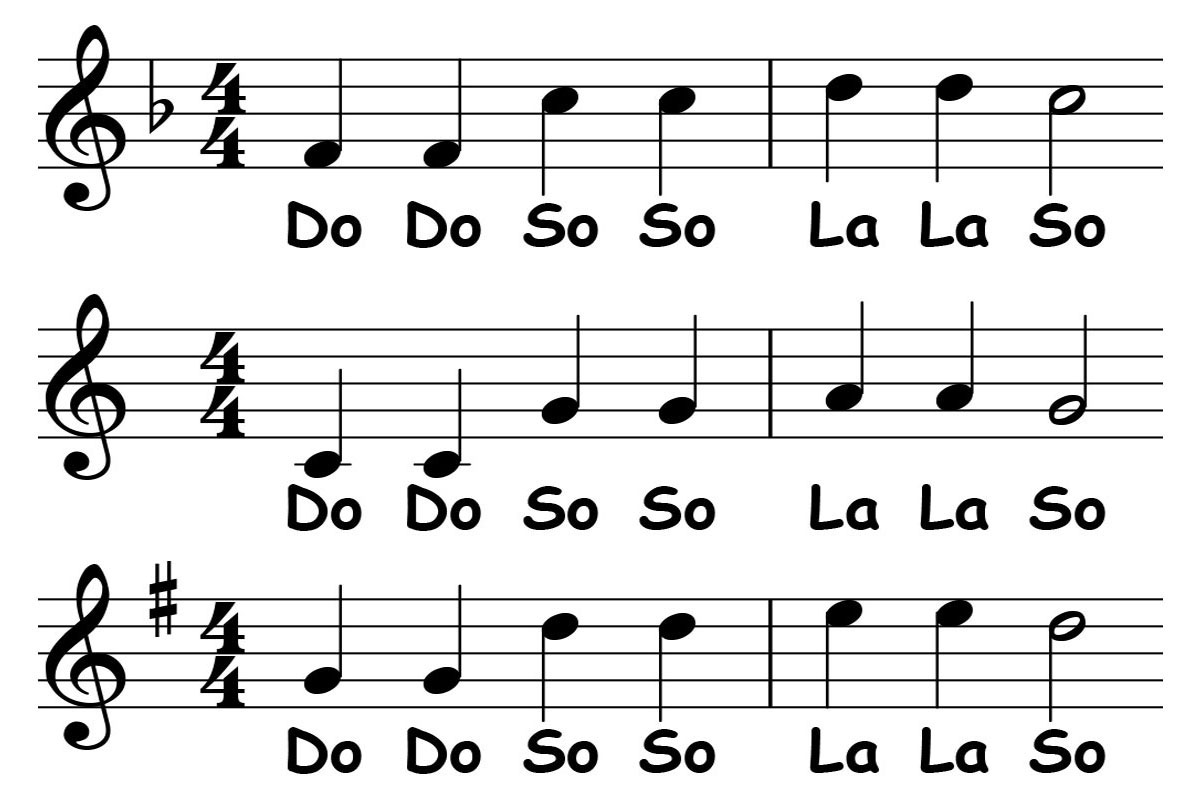Did you know that you can play a melody starting on any of the twelve possible notes?
For example, you can play “Twinkle, Twinkle” starting on the note C…

But you can also play starting on the note G…

or starting on the note Eb…

In fact, you can play “Twinkle, Twinkle” (or any other melody) starting on any of the twelve physical keys on the piano.
Be advised: Do is not necessarily the first note in any melody.
How Many Keys are There?
Since there are twelve possible physical keys on the piano, there are twelve possible physical “keys” in which you can play a piece of music.
But, while there are twelve physical keys, it is possible to write music with no sharps or flats or up to seven sharps or seven flats in the key signature, making at least fifteen keys theoretically possible.
That said, here is “Twinkle, Twinkle” written out and played in all fifteen theoretical keys arranged around the cycle from seven sharps to seven flats…
C# Major…

F# Major…

B Major…

E Major…

A Major…

D Major…

G Major…

C Major…

F Major…

Bb Major…

Eb Major…

Ab Major…

Db Major…

Gb Major…

Cb Major…

Takeaways
As you play and sing along and notice that…
- Do always sounds and feels like Do, So always sounds and feels like So, La always sounds and feels like La, and so on… no matter what key you are in!
- The “shape” of the melody in the score is identical, no matter what key you are in.
- When you change keys, all the letter names of the notes change, but the Solfege names remain exactly the same. The letter names change because they are arbitrary, but the Solfege names remain the same because they represent the inherent melodic-harmonic function of each note no matter what key you are in.
Understanding these concepts is essential for understanding how scales and melodies work, laying a solid foundation that facilitates ear training, reading, memorization, transposition, composition, and improvisation.
learn more…
Scales: Melodic Analysis using Solfege

Leave a Reply